A Rare 3-rotor German Enigma I Enciphering Machine, Modell 1, for Heer (Army) use, Berlin, 1943. Mid-war Enigma machine in working condition, serial number A7849, manufactured for the German military. In original oak box with hinged front panel, inner front panel with "ENIGMA" and "Klappe schliessen" stamps, rotors I, III, and V, each rotor with serial number A7849, "QWERTZ" keyboard of 26 keys, white on black backgrounds, battery switch, ebonite Steckerbrett [plugboard] with 12 stecker cables and 2 spares stored in the top lid of case), upper lid with 2 spare bulbs, "Zur Beachtung" metal instruction sign, stamped "Geheim!" twice, paper"Geheim" label below, gilt and black printed copyright label, 2 small metal plaques - one with serial number and the other with date of production, stamped copyright notice. Case exterior rubbed and with a few small chips, not tested for operation. The oak case 13 x 11 x 6½ inches. A CLEAN EXAMPLE OF THE GERMAN ENIGMA I MACHINE (HEERS ENIGMA). Patented by Arthur Scherbius in 1918, the Enigma machine utilizes three interchangeable rotors which scramble plain-text messages and produce a cipher text message which is then sent, generally via Morse code, to a receiving party with an Enigma set up in the same configuration as the sending Enigma. All of the machines could use the interchangeable wheels from any enigma, so to find a matching set of wheels with the same serial number as the Enigma is extremely rare. Though the German military was familiar with the Enigma, it was not adopted as their primary cipher device until 1926, when they discovered that all German naval coded messages had been intercepted and read by the British during the latter half of WWI. It is unknown exactly how many of these machines were made, but we know that their survival rate is very low. There are around 40 examples in museums around the world. The 3-rotor Enigma was used by the German army up to end of the war, by the navy until 1942, and also by the Airforce until c.1944. The Navy changed their machines to M4s in 1942 and the Airforce near the end of the war to M5s and upwards to prevent the Allies continually breaking the code. At the end of the war, rather than have the machines fall into enemy hands, they were destroyed by the German forces upon retreat, many simply thrown into rivers and lakes, and documents pertaining to their manufacture were burned or in many cases simply lost. This example of the standard three rotor enigma machine "Modell 1" was used principally by the army (Wehrmacht), and was their favored enciphering device. British attempts to break the Enigma code were fruitless for years. The breakthrough eventually came after the creation of the famous British codebreaking center Bletchley Park in 1937. Using the technology transferred to them from the brilliant Polish codebreaking team in 1939, as well as documents supplied by the French Intelligence from a German spy, Alan Turing, along with Knox, Foss and many others were able to break the Enigma code, shortening the war by an estimated two years, and saving countless lives.
A Rare 3-rotor German Enigma I Enciphering Machine, Modell 1, for Heer (Army) use, Berlin, 1943. Mid-war Enigma machine in working condition, serial number A7849, manufactured for the German military. In original oak box with hinged front panel, inner front panel with "ENIGMA" and "Klappe schliessen" stamps, rotors I, III, and V, each rotor with serial number A7849, "QWERTZ" keyboard of 26 keys, white on black backgrounds, battery switch, ebonite Steckerbrett [plugboard] with 12 stecker cables and 2 spares stored in the top lid of case), upper lid with 2 spare bulbs, "Zur Beachtung" metal instruction sign, stamped "Geheim!" twice, paper"Geheim" label below, gilt and black printed copyright label, 2 small metal plaques - one with serial number and the other with date of production, stamped copyright notice. Case exterior rubbed and with a few small chips, not tested for operation. The oak case 13 x 11 x 6½ inches. A CLEAN EXAMPLE OF THE GERMAN ENIGMA I MACHINE (HEERS ENIGMA). Patented by Arthur Scherbius in 1918, the Enigma machine utilizes three interchangeable rotors which scramble plain-text messages and produce a cipher text message which is then sent, generally via Morse code, to a receiving party with an Enigma set up in the same configuration as the sending Enigma. All of the machines could use the interchangeable wheels from any enigma, so to find a matching set of wheels with the same serial number as the Enigma is extremely rare. Though the German military was familiar with the Enigma, it was not adopted as their primary cipher device until 1926, when they discovered that all German naval coded messages had been intercepted and read by the British during the latter half of WWI. It is unknown exactly how many of these machines were made, but we know that their survival rate is very low. There are around 40 examples in museums around the world. The 3-rotor Enigma was used by the German army up to end of the war, by the navy until 1942, and also by the Airforce until c.1944. The Navy changed their machines to M4s in 1942 and the Airforce near the end of the war to M5s and upwards to prevent the Allies continually breaking the code. At the end of the war, rather than have the machines fall into enemy hands, they were destroyed by the German forces upon retreat, many simply thrown into rivers and lakes, and documents pertaining to their manufacture were burned or in many cases simply lost. This example of the standard three rotor enigma machine "Modell 1" was used principally by the army (Wehrmacht), and was their favored enciphering device. British attempts to break the Enigma code were fruitless for years. The breakthrough eventually came after the creation of the famous British codebreaking center Bletchley Park in 1937. Using the technology transferred to them from the brilliant Polish codebreaking team in 1939, as well as documents supplied by the French Intelligence from a German spy, Alan Turing, along with Knox, Foss and many others were able to break the Enigma code, shortening the war by an estimated two years, and saving countless lives.
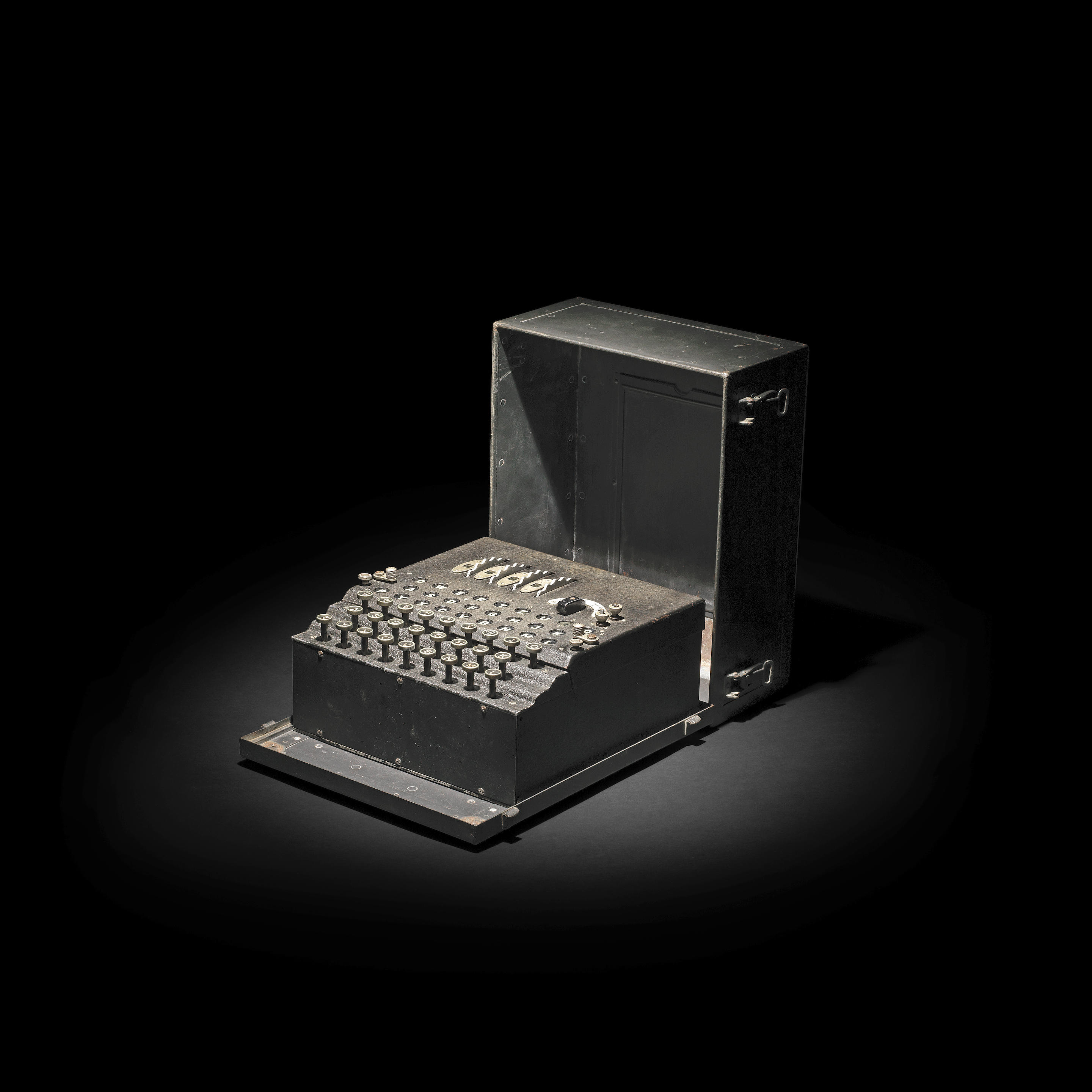
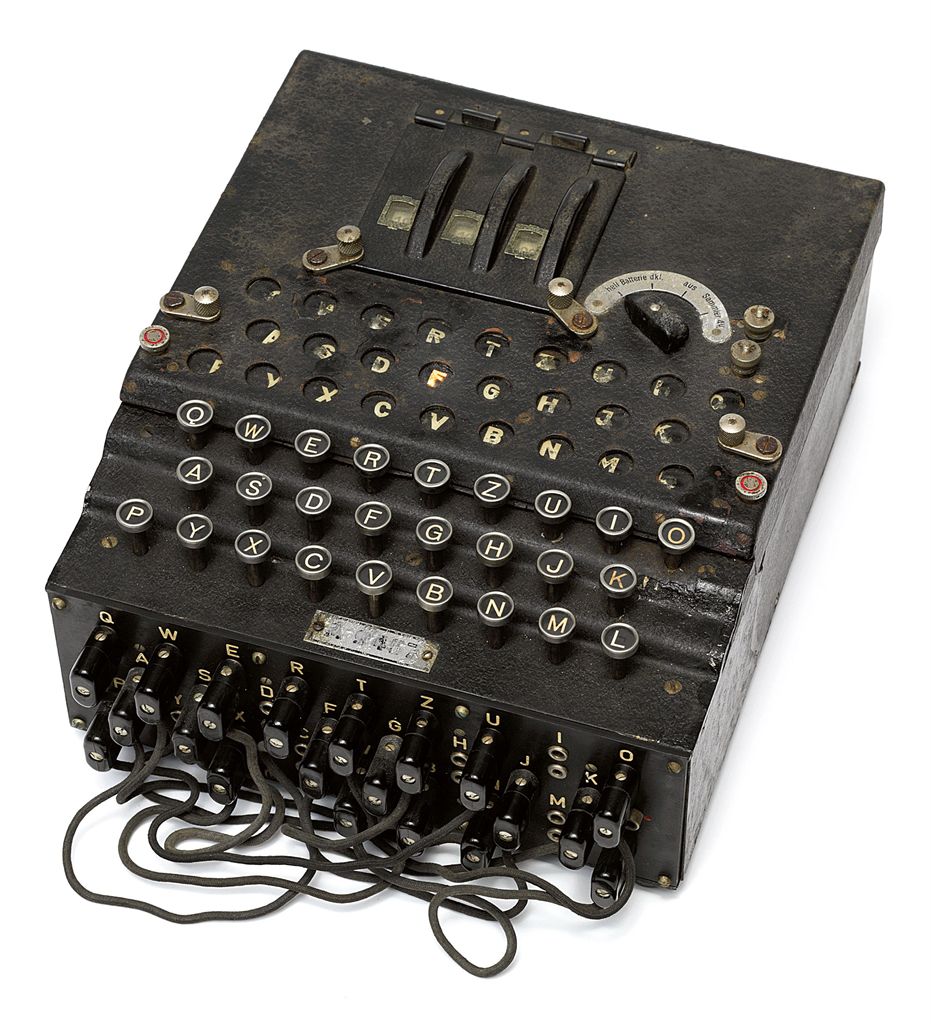
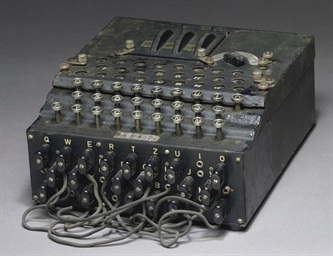

.jpg)
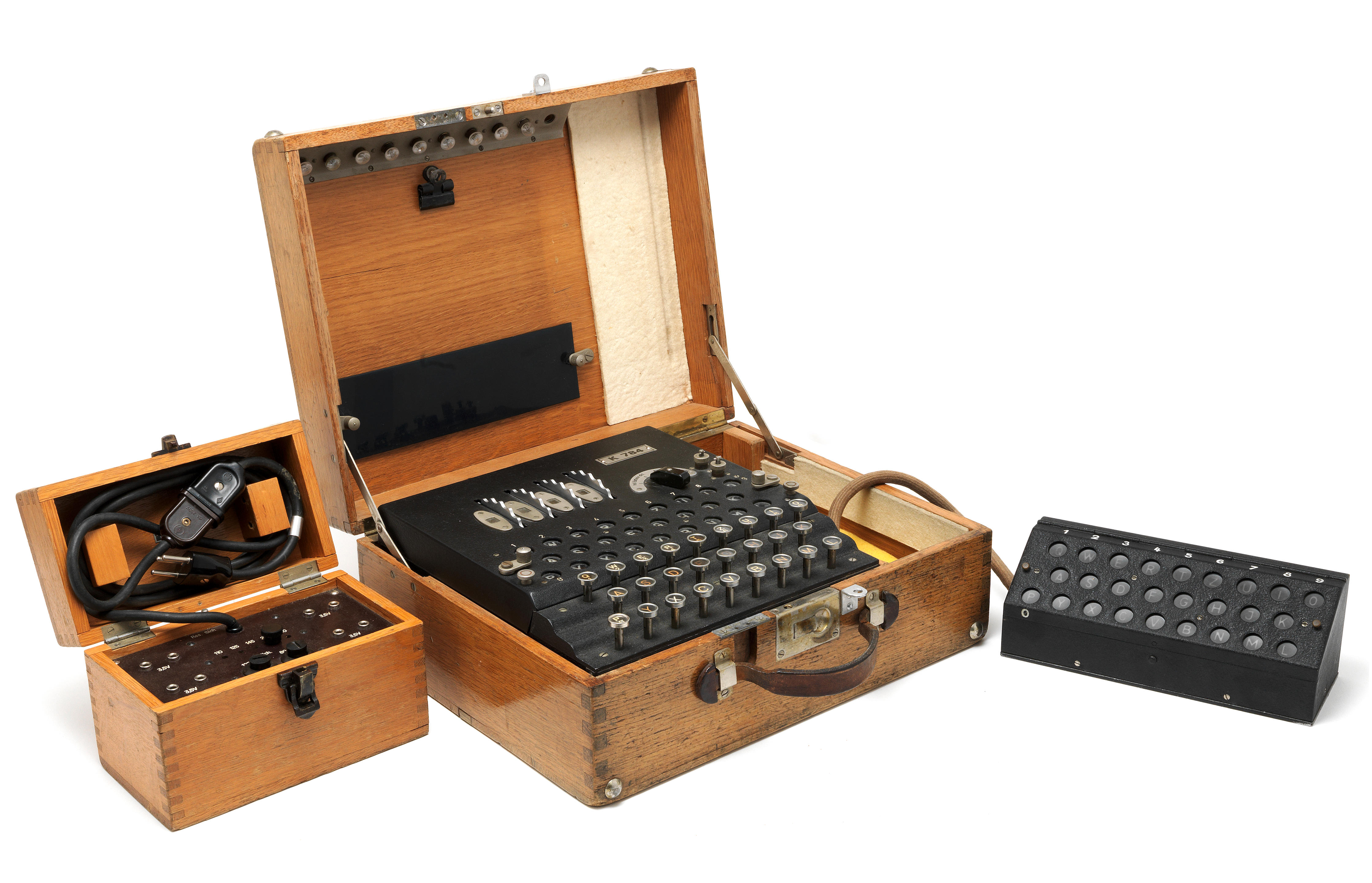
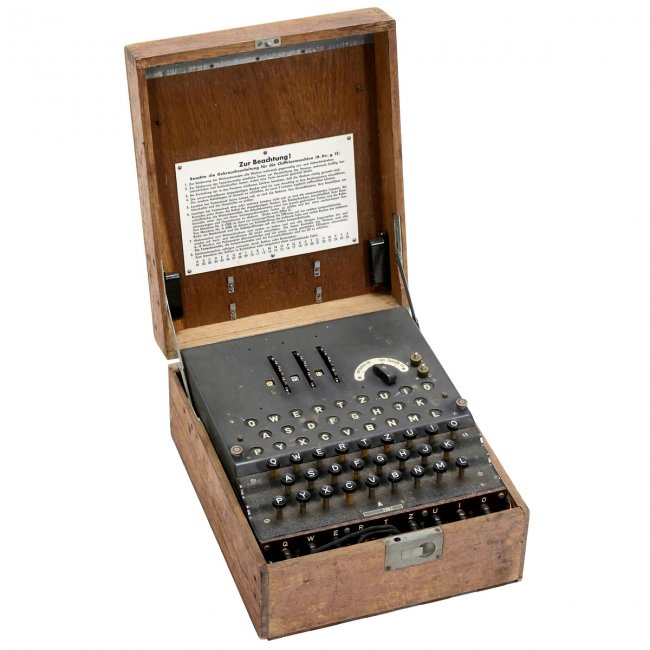



.jpg)
.jpg)


.jpg)
Try LotSearch and its premium features for 7 days - without any costs!
Be notified automatically about new items in upcoming auctions.
Create an alert